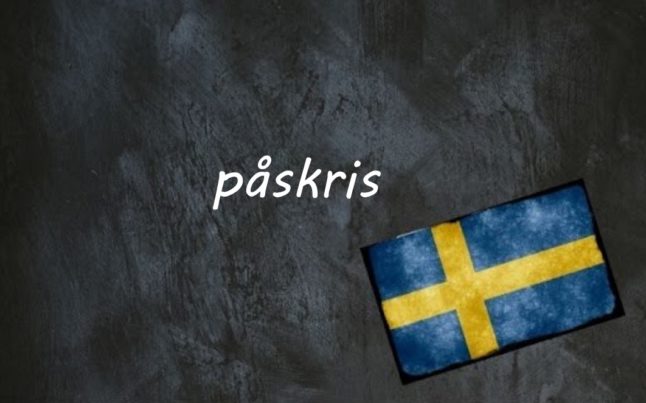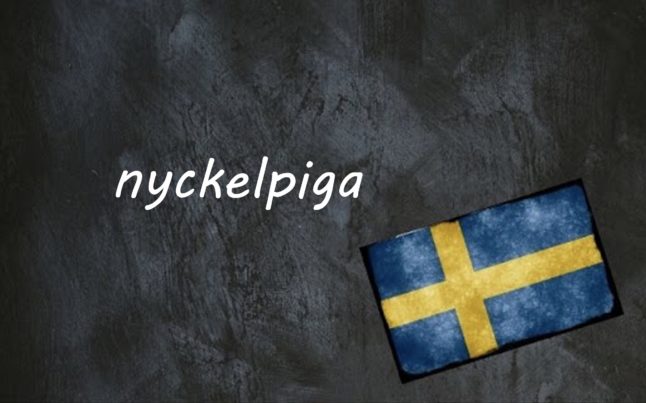Påskris is a term that many initially mistranslate as “Easter rice”, but it actually means “Easter branches/twigs”.
The first part of the word is the easiest to trace through history: påsk means “Easter”. It is etymologically linked to Jewish Passover, both sharing roots in the Hebrew word pesaḥ which meant “to pass over”, which became pascha in Latin and páskar in Old Norse before transforming into påsk in modern Swedish.
You can use it on its own in expressions like glad påsk (Happy Easter) and vid påsk (at Easter time), but just like the word jul (Christmas), it is also used in plenty of festive compound words, and påskris is one of the most important.
If you’ve learned Swedish food vocabulary, you’ll probably know that ris often means “rice”, but it can also be used to mean “rod”. In this sense, it can literally refer to a stick used as a rod, or be used figuratively: similar to the English phrase “carrot and stick” referring to encouragement through both rewards and punishment, the Swedish phrase ris och ros (literally “rod and rose”) means “criticism and praise”. In the word påskris, ris means “rod” in the literal sense.
- Don’t miss any of our Swedish words and expressions of the day by downloading our new app (available on Apple and Android) and then selecting the Swedish Word of the Day in your Notification options via the User button
Back in the 1600s, Swedes used to beat each other with sticks and rods on Good Friday, as a way of remembering Jesus’ suffering and experiencing suffering themselves. If you’re from an eastern European country such as the Czech Republic, you might recognize this tradition. The rods were called fastlagsris (literally “Lent rods”).
Luckily for those of us in Sweden, this is no longer the typical way of marking Easter, and these days sticks are used as pretty decorations rather than whips. This tradition started around the Stockholm area in the late 1800s, and became common across the whole country by the 1930s.
So påskris are twigs, often from birch, which are used to decorate inside and outside the home during the Easter celebrations, almost like a springtime variant on the Christmas tree.
In the religious context, it might symbolize the palm leaves said to have been scattered in front of Jesus when he entered Jerusalem on the Sunday before Easter. But in secular Sweden, they’re also just a way of adding colour and greenery to homes around March and April.
You’ll see the twigs, topped with colourful feathers, on sale at markets and other shops in the lead-up to Easter, although in recent years, the use of real feathers has declined, partly due to concerns for animal welfare.
You can also add extra decorations to your twigs, such as hanging eggs or animal-themed ornaments.
However you display them, påskris are an important and beautiful part of the Easter festivities in Sweden.
Examples
Jag vill skapa ett påskris utan fjädrar
I want to make Easter branches without feathers
Påskriset ser underbart ut!
The Easter branches look wonderful!
Villa, Volvo, Vovve: The Local’s Word Guide to Swedish Life, written by The Local’s journalists, is available to order. Head to lysforlag.com/vvv to read more about it. It is also possible to buy your copy from Amazon US, Amazon UK, Bokus or Adlibris.



 Please whitelist us to continue reading.
Please whitelist us to continue reading.
Member comments